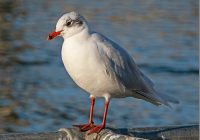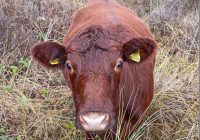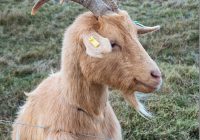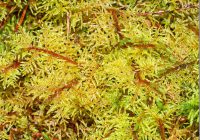Dr Phil Smith’s Wildlife Notes
December 2019
With measurable rainfall on sixteen days, December was ostensibly even wetter than November but there was only one really wet day (12th) and the second fortnight was relatively dry. As a result, although the dune water-table rose by 10 cm in the first half of the month, it actually fell by 1.5 cm in the second period. Overall, it was a mild December with few frosty mornings and no snow.
Could I find any insects, other than Winter-gnats, in December? A visit to the Holden Road, Crosby Ivy patches on 1st provided the answer. Sure enough, I spotted two each of the two common Drone-flies and a Green Shieldbug of the brown pre-hibernation colour-form. This bonanza couldn’t last; the following day I had to break ice 1 cm thick at the Devil’s Hole to measure the water-table. A trek down to the shore to look for long-gone Snow Buntings was poorly rewarded by a male Stonechat, three Pied Wagtails and a Turnstone flipping over seaweed on the tideline looking for Sand-hoppers.
News of the return to Southport Marine Lake of the wintering Mediterranean Gull justified a visit on 3rd with a bag of stale biscuits. At first elusive, the elegant adult finally perched for its portrait on a nearby post. I then moved on to Marshside and Crossens. Having spent an hour on the viewpoint overlooking Crossens Marsh with little to show for it, I was about to pack up when a Buzzard flew the length of the marsh. A flock of about 1000 Pink-footed Geese then took flight, in the midst of which was a solitary black-and-white Barnacle Goose. Then, a white flash in a channel about 400 m away alerted me to a Great White Egret with its distinctive long, snake-like neck and large yellow bill. Finally, the nearby RSPB hide produced the Buzzard again and our smallest falcon, a Merlin, on a fence post.
Later in the month, I realised I hadn’t been to Lunt Meadows Nature Reserve for a while, so I headed there in the hope of catching up with some of its wintering Short-eared Owls. A long wait in the gathering gloom was finally rewarded with an owl quartering distant fields. Not as good as I had hoped but you can’t win ‘em all.
A regular trip at this time of year is to Ainsdale Local Nature Reserve to say “Hello” to its Redpoll Cattle. Eleven of these attractive and friendly beasts are spending the winter opening up the rank vegetation on the older dunes where access on foot was almost impossible a few years ago. Now, there are well-grazed areas of fixed-dune where a riot of colourful wildflowers will be seen in the summer. However, some of the slacks are still cloaked in dense scrub which needs attention.
Often completely dry in summer, the ponds on Freshfield Dune Heath Nature Reserve were full by mid-month. A Wood Mouse ran across one of the paths in front of me, an unusual sight in daytime. The mosses and liverworts in the woodland looked verdant in the damp conditions, while five attractive Golden Guernsey Goats in the Hay Meadow were browsing Brambles and willows, helping to maintain this diverse habitat. I was pleased to see that some of the invasive Gorse had been cut back along the edges of paths.
My Christmas day walk took me into the Lifeboat Road woods, where spectacular growths of mosses somehow recalled the Hanging Gardens of Babylon. Particularly impressive were drifts of Big and Little Shaggy-mosses, two species that were previously thought rare on the Sefton Coast and have restricted distributions in lowland England.
The last few days of the month were largely devoted to lichens on Freshfield Dune Heath with Joshua Styles and Trevor Davenport. Trying to identify these strange but important organisms was a new departure for me but Josh brought a key for Cladonia lichens, so we had a go. Eventually we listed around 15 species, though several need expert confirmation. One of the earliest to identify is the so-called Reindeer Moss Cladonia rangiformis which has a pattern on its branches said to resemble that on a Giraffe’s neck. I also found a large patch of the beautiful red-stemmed Glittering Wood-moss, not a rarity but always a highlight.
So ended a year of weather extremes, 2019 having seen record high UK temperatures in February, July and December, including the all-time record high temperature of 38.7oC (in Cambridge). The decade was the second warmest ever, after the 2000s. Set against long-term declines for most of our flora and fauna, there have been extraordinary shifts north and west in the distributions of many warmth-loving insect groups, from dragonflies to shieldbugs and from bush-crickets to solitary bees. As featured in these notes for over a decade, these movements provide useful evidence for the effects of climate change. Needless to say, they have been largely ignored by the “media”.





